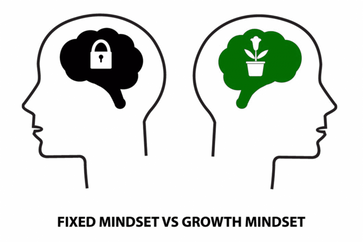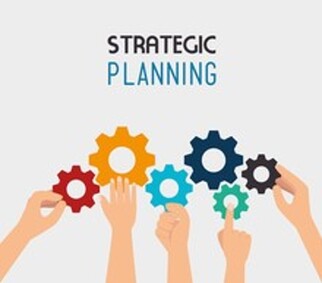Exclusive Access Granted To Our Blog!
|
The goal of any business is to grow. But if you’re a small business owner, solo entrepreneur, or freelancer, how do you do this? Even if your customer base and demand suddenly expands, how can you keep up? There are 3 keys to growing your business without needing to invest a great deal in facilities or employees. These are techniques that any business, big or small, can use to scale up and work smarter — not harder. Save Time with Automation There are automation tools for almost every task a business does. Automation allows you to take repetitive tasks that drain your time and let a computer program handle them for you. One other reason to entrust a computer is to reduce human error. For example, accounting tasks that involve crunching numbers are great to automate. Start with the simplest, most repetitive tasks first. Look for automation tools that can perform these tasks for you. Choose a few to research and read reviews. Start with free tools to save money and take advantage of free trials if you’re considering premium programs. Automate one task at a time and then move on to the next. Delegate to Your Team You don’t have to do everything yourself. Even if you have just a few team members, don’t be afraid to delegate tasks they can do for you. This gets the task off your schedule and also enriches your employees by teaching them new skills. Look at tasks that don’t necessarily need to be performed by you. For example, if you’re checking social media every day and responding to comments and shares, you could probably train an employee who understands your brand and company well enough to do that for you. Take a task you think you could delegate and consider which of your employees might be a good candidate. Training takes time. You’ll need to show them how to do it, monitor to make sure they’re doing it right, and also be there to assist if they have problems or questions. Start Outsourcing Whether you have a team or not, you can outsource tasks to someone outside your organization. Many freelance workers and service providers are offering various types of help online, so it’s easy to use the Internet to find someone suitable. Outsourcing helps you get tasks off your to-do list, but it offers an even more important benefit. There may be some tasks an outside service provider could do better than anyone in your organization, such as graphic design, programming, or content writing. You can find service providers through web search, social media, or freelance service websites. But the best help comes from referrals. Ask business partners and associates if they have anyone they can recommend first. When is the Right Time? The right time to start automating, delegating, and outsourcing is right now. Don’t wait until you feel you need it. This will make your business run smarter right now, and when it’s time to scale, you can scale up smoothly. Check out INNOVATE ACADEMY FOR ENTREPRENEURS self-paced learning, which teaches you the ABC’s of growing your business the right way and helps you achieve your business goals. HERE
0 Comments
All your hard work is finally paying off. It’s a dream come true when you see your business start to grow. But this dream could quickly turn into a nightmare if you’re not growing the right way. Here are the 7 mistakes small businesses often make that slow down their growth, and how you can avoid them. Growing Without a Plan If you don’t have a solid business plan that includes how you’re going to grow, this guarantees that your growth will be chaotic. Things will change that are out of your control, and you’ll find yourself always on the defense. If you grow in a careful and controlled way, you will lead this growth and work toward your goals. Thinking the Same Actions Get the Same Results A common mistake is doing the same thing over and over again and expecting the same results. Of course, once you find something that works well, you should do it again. But over time, you need new ideas to try and add to your arsenal. Many businesses become stale and stunt their growth by failing to evolve. Failing to Get Feedback Every idea you try and action you take gives you feedback. If you don’t listen to this valuable feedback from the market, you’ll never fully grasp it. Monitor the results of your efforts and especially new ideas, and you’ll learn what works and what direction to go. Focusing on YOU and Not the Market The success of your business doesn’t depend on you but on meeting the needs of your market. You need to know your target market well. This includes your ideal customers, your competitors, and the industry you’re operating within. Many businesses fail to grow because they don’t keep an eye on what’s happening in their market and they become out of touch. Chasing After Every Idea There are a million ideas you can try in your business, but what you need in order to grow is focus. You can’t afford to waste time on avenues that don’t lead anywhere. You’ll encounter many business opportunities, but you need to be able to distinguish which will get you profits and results and focus on these above all others. Working with the Wrong People Many businesses don’t pay enough attention to who their partners and associates are. If you’re working with or hiring the wrong people, you won’t grow the way you want to. Avoid toxic and negative people. Surround yourself with people who share the growth mindset and believe in delivering value to those around them. Growing Too Fast Of course, you want to see your business grow as fast as possible, but growing too fast can cause plenty of issues. Too much investment, too much outsourcing, too much of anything brings more risk than it’s worth. Healthy business growth should be focused, slow, and steady. This is how you meet your long-term goals. About The Author Pat Simes is a Business Strategist, blogger and Founder of Innovative Business Solutions and Innovate Academy. She currently resides in the Midwest and is committed to inspiring and empowering entrepreneurs to transform their vision to reality. A great deal of time and effort goes into growing a business successfully, and every business is a little different. However, there are 5 essentials to growing a business and if you keep these in mind, you’ll be able to make the right decisions that lead to sustainable growth. Your Product Fulfills a Need No matter what product or service you sell, it needs to fulfill a need that your target audience has. It must solve a problem and make their lives better in a tangible way. Most products save time, money, or headache for the people who use them. Clearly identify how your offerings uniquely solve customer problems and get regular feedback from customers as you grow and the market changes so you can continue meeting their needs. Information is Key Great business leaders are information junkies. They’re hungry to know everything they can about their customers, their industry, and their competition. Things can change quickly and you need to know about this change even before it happens. Establish information sources and ways to constantly get feedback from the market, and use this information to guide key decisions as you grow. New and Crazy Ideas In order to grow, your business needs a steady flow of new ideas to try out and use for feedback. This is where business opportunities come from. These don’t have to be amazing, world-changing ideas. They just need to be something you can test and see what happens. In fact, the more outside-the-box, the better. The more ideas you can generate, the more you can try out and see if they have any value. You should always be thinking of new products, markets, marketing channels, and content types to explore. Get Ready to Scale Before You Scale When a business starts to grow, it can feel like things are quickly spiraling out of control. You now have more orders coming in and you have to ramp up, while at the same time fulfilling those orders. It can get hectic, so you should lay the groundwork before you actually need it. Things like hiring outside help, implementing automation tools, and training your staff on new tasks shouldn’t be done in a hurry. Start now before you really need them. A Strong, Clear Vision If you haven’t already done so, create a statement that clearly explains your business’s vision. How does your business uniquely make your customers’ lives better? It’s important to identify this in the early stages and keep it in mind as you grow so that you don’t stray from the path. If you’re a small business with a family feel, for example, you want to keep this family feeling even as you grow. Start Planning Now When you think about your business growing, it probably seems like a dream in the distant future. But even if you’ve just started your company, it’s time to think about how you’ll grow and lay the groundwork so you can do so successfully. Do you want to learn more about the keys to growing your business? Check out INNOVATE ACADEMY FOR ENTREPRENEURS an affordable self-paced learning environment. Learn the ABC’s of business and help to achieve your business goals. About The Author Pat Simes is a Business Strategist, blogger and Founder of Innovative Business Solutions and Innovate Academy. She currently resides in the Midwest and is committed to inspiring and empowering entrepreneurs to transform their vision to reality. In order for your business to grow and reach its full potential, you need to adopt a growth mindset. Your mindset has a profound impact on the direction of your business and whether it will grow or stagnate.
Businesses encounter many challenges as they scale. By repeatedly facing challenges and learning from them, you change and evolve. This is why the growth mindset is such an important factor to business success. Growth Mindset vs. Fixed Mindset The growth mindset is different from the fixed mindset. Most of us believe things are the way they are, and they don’t change over time. This is a way of thinking that believes we’re born with talent and intelligence, and we do what we can with them. The growth mindset says that talent and intelligence are just the starting point. In the grand scheme of things, it’s not these qualities but perseverance and the capacity to learn that allow us to do amazing things. To put it more simply, the fixed mindset says, “I can’t do that.” The growth mindset says, “I can’t do that yet.” The 9 Qualities of the Growth Mindset Unafraid to Fail. You will inevitably make mistakes along the way. The growth mindset sees every failure as a valuable learning experience. You take what you learn from the experience and use it for next time. Accountable to Yourself. People with this mindset don’t blame others for what happens. They take accountability for their words and actions. Not Concerned with What Others Have. If you think this way, you’re not jealous or envious of the success of others. You’re happy for the people around you who succeed, and you draw inspiration from them for your own success. Positive. People like this are unfailingly positive. Not only are they positive, but they surround themselves with positive people and steer clear of negativity. Constantly Learning. The key feature of the growth mindset is that you’re hungry to learn. You want to know about everything. But most of all, you want to learn through experience. You’re excited to try something new and see what happens because you know experience is the best teacher. Obsessed with Efficiency. People who think this way are always seeking to streamline and make things more efficient. They’re trying to work smarter, not harder. Priority Setting. Successful people are good at setting priorities and focusing on the most important things. They don’t get lost in the little details or easily distracted. Resilience. The growth mindset makes you resilient. You’re ready to get kicked to the floor and get right back up to try again. Gaining Expertise. A person with this mentality seeks to become an expert in their field and gain deep expertise. How to Cultivate the Growth Mindset The good news is that the growth mindset isn’t something you’re born with. Anyone can cultivate this mentality through reframing the way they see things and adopting a few success habits. Many things will contribute to the success of your business, but one of the big ones is simply how you see the world. About The Author Pat Simes is a Business Strategist, blogger and Founder of Innovative Business Solutions and Innovate Academy. She currently resides in the Midwest and is committed inspiring and empowering entrepreneurs with practical knowledge and tools to become architects of their business vision and transform their vision to reality. Growing a business requires a great deal of work and perseverance. But there’s more to it than that. Good leaders set aside time to look at the long-term and plan strategically. Then, they can guide their business’s growth, no matter what challenges they face. But this isn’t just for large corporations. If you’re a small business owner or entrepreneur, you need to be spending time on strategic planning in order to grow your business. Proactive vs. Reactive Without strategic planning, you’re always on the defense. You can only react to what happens in a way that reduces risk and puts your business in the most favorable position possible. The idea behind strategic planning is to be proactive rather than reactive. It involves seeking challenges to face and developing contingency plans for obstacles you will need to overcome along the way. Your Business’s Long-Term Plan How far ahead do you think into the future? You probably have a solid plan for this month or this quarter, but what about a year from now? What about five or even ten years from now? Long-range business planning starts with spending time looking into the future. Decide where you want to be in one year, five years, and ten years. Imagine what your business will be like at that time. Visualizing it in concrete terms helps you set goals and develop a plan for achieving those goals. Make Your Goals Your goals for the future should be documented. For example, rather than saying that you’d like to have more clients, write down that goal, choose a number and decide by when you’ll have this done. Research shows that making goals specific and set with deadlines makes them more likely to be reached. Strategic Questions and Contingency Plans With your picture of the future visualized and goals set, it’s time to start thinking about contingency plans. You should have a plan for any unexpected setback that could happen along the way. For instance, if there’s some change in the market, you don’t want it to take you entirely by surprise. You should have a Plan B already drawn up and ready to go. Brainstorm things that could happen. Imagine you’re a skeptic hearing about your long-term plans. What questions might they ask you to challenge you? Ask yourself these questions so that you’ll think realistically about what could potentially happen in the future. Define Your Company Vision If you haven’t already done so, define your company’s vision. Explain how your business helps your customers and clients in a unique way. Frame this as a statement of around 100 words. This will help you clarify your vision for the future and keep you on target as you work toward your goals. Man Makes Plans and God Laughs There’s one great paradox of business planning. You can’t move forward without a solid plan, but plans are liable to change. But with a good plan and a clearly defined vision, you can get started knowing where you want to go. Keep your eyes open for changes in the market and then adjust your plan accordingly. This is how you grow and steer your business toward success. Do you want to learn more about planning for business growth? Check out INNOVATE ACADEMY FOR ENTREPRENEURS, which teaches you the ABC’S of growing your business HERE. About The Author Pat Simes is a Business Strategist, blogger and Founder of Innovative Business Solutions and Innovate Academy. She currently resides in the Midwest and is committed to inspiring and empowering entrepreneurs to transform their vision to reality. |
AuthorPat Simes Archives
July 2024
Categories
All
|





 RSS Feed
RSS Feed